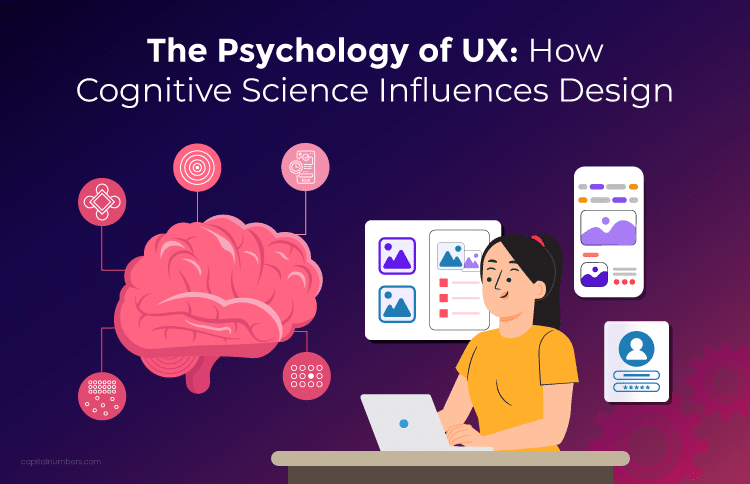Top React Libraries to Build Faster, Scalable Apps in 2025
Table of Contents
React.js is one of the most widely used front-end frameworks for building modern websites and applications. Developed by Meta (formerly Facebook), React allows businesses to create responsive, fast-loading, and interactive user interfaces that enhance the customer experience.
While React is powerful on its own, React libraries enhance development by providing pre-built functionalities that reduce manual coding, improve performance, and accelerate the process. Developers can leverage these tools to build robust applications faster instead of writing repetitive code from scratch.
Key Benefits of Using React Libraries:
- Saves Development Time – Ready-made components and features integrate directly into applications, reducing the time spent on repetitive coding.
- Improves Performance and Scalability – Optimizes how an app loads, fetches data, and responds to user actions, ensuring better speed and scalability.
- Reduces Boilerplate Code – Pre-written solutions eliminate unnecessary coding, making development more streamlined and efficient.
Top 10 React Libraries Every Developer Should Use in 2025
Here are the top 10 React libraries in 2025 that can enhance application development, making projects faster, more scalable, and feature-rich.
1. React Query (TanStack Query) – Best for Data Fetching
Handling server state management and API calls manually can be time-consuming and inefficient. React Query, also known as TanStack Query, simplifies this process by automating data fetching, caching, and synchronization in React applications. It ensures that your app always displays the latest data while reducing unnecessary network requests.
Key Features:
- Automatic Caching – Stores and reuses fetched data to minimize API calls.
- Background Updates – Refreshes data automatically without disrupting the UI.
- Pagination & Infinite Scrolling – Efficiently loads large datasets.
This library enhances performance, scalability, and user experience for applications relying on real-time data.
2. Redux Toolkit – Best for State Management
Managing global state in large-scale applications can be complex, but Redux Toolkit simplifies the process by reducing boilerplate code and improving efficiency. It provides a structured and scalable approach to state management, making it ideal for enterprise-level applications that require predictable data handling.
Key Features:
- Simplified State Logic – Reduces repetitive code with built-in utilities.
- Built-in Middleware Support – Seamlessly integrates with async operations like API calls.
- Improved Performance – Optimized state updates prevent unnecessary re-renders.
For projects requiring scalability and maintainability, Redux Toolkit is a must-have for efficient state management in React applications.
3. React Hook Form – Best for Form Handling
Forms are essential in most applications, but handling them efficiently can be challenging. React Hook Form is a lightweight and high-performance library that simplifies form management by reducing re-renders and improving validation. Unlike traditional form handling methods, it optimizes state management, making forms more responsive and efficient.
Key Features:
- Minimal Re-Renders – Improves performance by updating only necessary fields.
- Built-in Validation – Supports schema validation with Yup, Zod, and other libraries.
- Easy Integration – Works seamlessly with controlled and uncontrolled components.
For faster, smoother, and scalable form handling, React Hook Form is a must-use tool.
4. React Router – Best for Navigation
React Router is a powerful library that enables client-side routing in React applications, allowing users to navigate between different pages seamlessly without full-page reloads. It enhances the user experience by enabling dynamic routing, nested routes, and code-splitting for optimized performance.
Key Features:
- Nested Routes – Structure complex UI layouts with hierarchical navigation.
- Dynamic Path Matching – Handle dynamic URLs efficiently with route parameters.
- Lazy Loading Support – Load components only when needed to improve app speed.
For scalable and smooth navigation, React Router is an essential tool in modern React applications.
5. Framer Motion – Best for Animations
Framer Motion is a powerful and flexible animation library that makes it easy to create smooth, interactive UI transitions in React applications. Unlike traditional CSS animations, it offers declarative syntax, gesture-based interactions, and physics-based animations, making animations feel natural and fluid.
Key Features:
- Easy-to-Use API – Add animations with minimal code.
- Drag and Gesture Support – Enables interactive elements like drag, hover, and tap effects.
- Optimized Performance – Uses hardware acceleration for smooth transitions.
For visually engaging and modern user experiences, Framer Motion is the go-to React animation library.
6. Zustand – Lightweight Alternative to Redux
Zustand is a minimalistic and efficient state management library that offers a simpler alternative to Redux. It eliminates the complexity of reducers, actions, and boilerplate code, allowing developers to manage global state with ease. Unlike Redux, Zustand provides a more intuitive API while delivering better performance through optimized state updates and fewer re-renders.
Key Features:
- Minimal Boilerplate – Simplifies state management with a clean and straightforward API.
- High Performance – Avoids unnecessary re-renders for better app speed.
- Asynchronous State Handling – Supports async actions without extra middleware.
For lightweight and scalable state management, Zustand is an excellent choice.
7. SWR – Best for Data Fetching & Caching
SWR (Stale-While-Revalidate), developed by Vercel, is a lightweight yet powerful data-fetching library that simplifies API calls in React applications. It offers a simpler alternative to React Query, handling caching, revalidation, and real-time updates effortlessly. SWR ensures that users always see the latest data while reducing unnecessary network requests, making applications faster and more efficient.
Key Features:
- Automatic Caching – Stores fetched data for instant access.
- Background Revalidation – Keeps data up to date without blocking UI.
- Fast Performance – Reduces API calls by reusing cached responses.
For seamless and efficient data handling, SWR is a must-use tool.
8. ShadCN UI – Best for Pre-Built UI Components
ShadCN UI is a modern and accessible component library designed for React.js applications, offering pre-built UI elements that seamlessly integrate into projects. Built on Tailwind CSS, it provides highly customizable and lightweight components, ensuring a clean and consistent design across applications. With a focus on accessibility and performance, ShadCN UI helps developers build beautiful interfaces quickly without compromising user experience.
Key Features:
- Pre-Styled, Customizable Components – Easily adapt to project needs.
- Accessibility-First Design – Ensures usability for all users.
- Seamless Tailwind Integration – Keeps styles lightweight and consistent.
For fast, stylish, and accessible UI development, ShadCN UI is an excellent choice.
9. React Testing Library – Best for Component Testing
React Testing Library (RTL) is a widely used testing framework that helps developers write user-centric tests for React applications. Unlike traditional testing methods that focus on implementation details, RTL ensures that tests mimic real user interactions, making applications more reliable and bug-free. It promotes best practices by encouraging developers to test components the way users experience them, improving overall application stability.
Key Features:
- User-Focused Testing – Ensures components work as expected in real-world scenarios.
- Minimal Setup – Easy to integrate into existing projects.
- Supports Accessibility Testing – Helps detect usability issues.
For robust and reliable applications, React Testing Library is a must-have.
10. Jotai – Atomic State Management Made Easy
Jotai is a lightweight and flexible state management library for React that follows an atomic state model, making it highly efficient for handling complex state logic in large applications. Unlike traditional state management tools like Redux, Jotai provides a more intuitive and scalable approach, where each piece of state (atom) is managed independently. This minimizes re-renders and improves performance, making it ideal for modern React applications.
Key Features:
- Atomic State Model – Manage independent state pieces efficiently.
- Scalable & Minimalistic – Less boilerplate, more flexibility.
- Optimized Performance – Reduces unnecessary re-renders.
For simplified and scalable state management, Jotai is an excellent choice.
Choosing the Right React Library for Your Project
Selecting the right React library is crucial for building efficient, scalable, and maintainable applications. The choice depends on several factors:
- Project Size & Complexity: Large-scale applications may require advanced state management (e.g., Redux Toolkit), while smaller projects benefit from simpler tools like Zustand.
- Team Familiarity: Using a library that aligns with your team’s expertise ensures faster adoption and smoother integration.
- Community Support & Maintenance: Opt for actively maintained libraries with strong community backing for long-term reliability.
React.js experts carefully assess these factors to integrate the best-suited tools, ensuring optimal performance and scalability.
You May Also Read: Next.js and React: A Combination for Superior Performance
Get the Most Out of React Libraries with the Right Developers
While React libraries simplify development, implementing them effectively requires expertise. Businesses looking to build high-quality, scalable applications should hire React.js developers with experience in using these tools.
A skilled React.js expert can:
- Select the right libraries for your specific needs.
- Optimize your app’s speed, scalability, and security.
- Ensure a smooth development and deployment process.
If you’re planning to develop a cutting-edge web or mobile application, working with experienced React.js developers will help you get the best results while saving time and resources.















